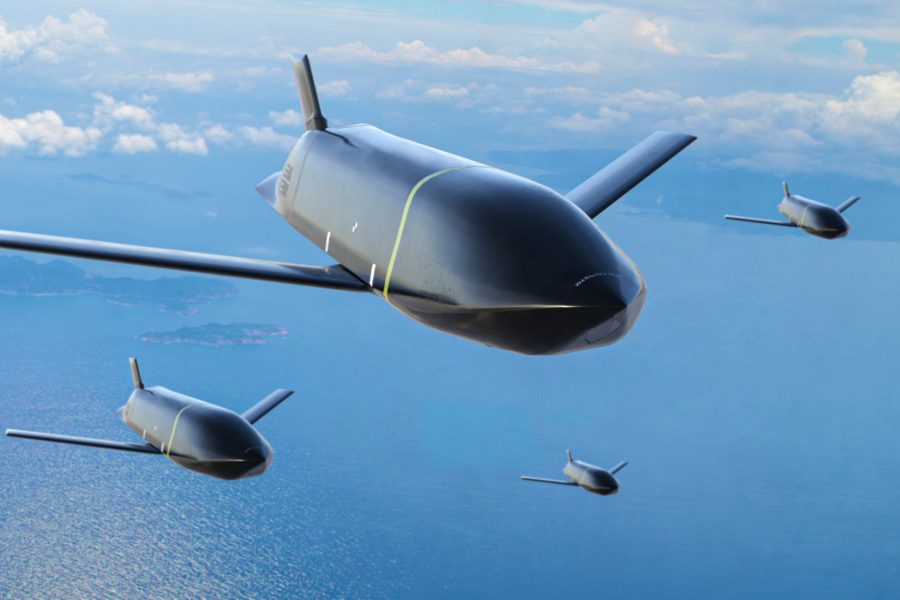The Navy recently launched four AGM-158C-3 Long-Range Anti-Ship Missiles at once, in what’s being billed as a “graduation exercise for the latest configuration” of the stealth LRASM. The event follows closely the Air Force beginning multiyear procurement of the joint-service missile.
Lockheed Martin revealed the milestone in an April 3 release, saying it took place during the “12th Integrated Test Event,” but provided no details on where and exactly when it was conducted. However, the contractor stated that the test showed LRASM’s “inherent high-end lethality from mission planning through kill chain integration and its effects on the target.” The Navy touted the test as having met all mission objectives.
The missile is intended for use “against heavily defended surface combatants that no other weapon in the inventory can provide,” Lockheed said, and the test marked “‘the next big step in LRASM’s evolution.” The test “lays the foundation for increased capabilities to come.”
In its fiscal 2025 budget request, the Air Force asked Congress to ramp up a multiyear buy of LRASM, aiming to acquire 549 of the weapons through fiscal 2029 at a cost of $1.7 billion. The higher production rate follows the fiscal 2024 buy of just 27 missiles, at a cost of $87.8 million. The unit cost for FY24 was $3.24 million per round, while the five-year buy reduces that unit cost slightly, to $3.22 million per missile.
Air Force budget documents project 115 missiles bought in fiscal ’25, followed by 99 in ’26; 111 in ’27, and 112 each in ’28 and ’29. No LRASMs are planned to be acquired after that. Production of the C-3 variant for the Air Force cuts in during FY26.
The Navy’s nomenclature for the LRASM is “Increment 1” of the “Offensive Anti-Surface Warfare (OASuW) weapon development program,” but it’s not clear if the Air Force plans to follow up its LRASM buy with Increment 2, which the Navy has said will be the Hypersonic Air-Launched OASuW, or HALO.
The Air Force said LRASM “addresses an air-launch capability gap by providing flexible, long-range, advanced anti-surface capability against high-threat maritime targets.”
Air Force Secretary Frank Kendall told reporters when the 2025 budget request was rolled out last month that “fiscal constraints” meant that not all programs could be bought as efficiently as USAF would have liked in the coming years, and “we pay a bit more for the same number” of items in some categories. He described this as the “buy to budget” approach.
While the multiyear buy technically begins with Lot 8 in 2024, Congress only recently appropriated funds for that fiscal year, and the increase in quantities does not begin until fiscal 2025. The higher quantities are in Lots 9-12.
A multiyear buy permits the contractor to buy materials in economic quantities while hiring workforce and building tooling to produce at the most efficient rate, knowing how many units are to be produced over several years.
Taking a multiyear approach can also create “synergies in production across different but related programs [that] can generate efficiencies and result in greater production capacity, accelerated delivery, and lower unit costs,” USAF said.
The LRASM is described as belonging to the AGM-158 Joint Air-to-Surface Standoff Missile (JASSM) “family,” and the two weapons are produced in the same facility by Lockheed Missiles and Fire Control at Troy, Ala. While the Air Force pays for development of the JASSM variant, the Navy pays for development of the maritime-specific model. The Air Force buys missiles on behalf of both services, but they are funded separately.
The Navy certified an early version of LRASM on the F/A-18EF in 2018, and the Air Force on the B-1B bomber in 2019.
